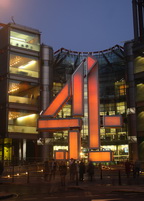Different approaches, different subjects

Different approaches, different subjects

Here are some details of the front pages of the national dailies for one date (23 July 2008). For each paper, the first line is the main headline and the figures in brackets are the height of the letters used for it.
How many do they sell?
As you can see, the ‘popular papers sell about four times as many copies as the ‘qualities’. The gap, however, is much narrower than in past decades. In 1950, for example, they sold twenty times as many. But their sales have fallen greatly since that time. Overall, newspaper circulation has declined by a third. It has declined especially sharply in the twenty-first century, probably, because of the internet, as well as the increasing number of free newspapers (which get their money from advertising).
The rest of the press
If you go into any well-stocked newsagent in Britain, you will not find only newspaper. You will also see rows sand rows of magazines catering for almost every imaginable taste and specializing in almost every imaginable pastime. There are around 3,000 consumer magazines published in the county and about four millions copies are sold every month.
The vast majority of these sales are of ‘women’s interest’ magazines and (even more so) magazines which list all the TV and radio programmes for the coming week. The best known of these is the Radio Times, which also contains same fifty pages of articles. (Note the typically British appeal to continuity in the name ‘Radio Times’. The magazine was first produced before television existed and has never felt compelled to update its title.)
There are also a few publications dealing with news and current affairs. Partly because the national press is so predictable (and often so trivial), some of these periodicals, such the New Statesman and The Spectator, are quite widely read. In terms of sales, two of them in particular stand out. One is the Economist, which is of the same type as Time, Newsweek, Der Spiegel and L’Express. It is fairly obviously right of centre in its views, but the writing is very high quality and that is why it has the reputation of being one of the best weeklies in the world. (In fact, it sells five times as many copies abroad as it does in Britain itself.)
The other is very different. Private Eye is a satirical magazine which makes fun of all parties and politicians, and also makes fun of the mainstream press. It also has a serious side, unearthing corruption in public life. Because of this combination of, often rather ‘schoolboyish’, humour and investigative journalism, it is forever defending itself in legal actions.
Papers and Politics
None of the big national newspapers ‘belongs’ to a political party. Moreover, the tabloids devote relatively little space to politics. However, each paper has an idea of what kind of reader it is appealing to, and a fairly predictable political outlook. Each can therefore be seen, rather simplistically, as occupying a certain position on the right-left spectrum.
As you can see, the right seems to be over-represented in the national press. This is not because such a large majority of British people hold right-wing views. It is partly because the press tends to be owned by people with right-wing views. However, the owners normally put selling copies ahead of political viewpoint. The Sun for example, supported the Labour party during the 1970s. But just before the 1979 election, it came out in favour of Margaret Thatcher’s Conservative party, which won the election. For the next 17 years, it was a strong supporter of the Conservative government. But two months before the 1997 election, when the opinion polls made it clear the Conservatives were not going to win again, it suddenly changed back to Labour!
In any case, a large number of readers are not very interested in the political coverage of a paper. They buy it for the sport, or the human interest stories and scandals, or something else. For these reasons, the descriptions below, although intended as humour, are perhaps more informative of the relation between the nationals dailies and politics. They are taken from the script of the political satire Yes, Prime Minister, in which the Prime Minister, Jim Hacker, is trying to reassure his two advisers, Sir Humphrey and Bernard, that he understands the British press.
1. The Morning Star is a socialist newspaper with a very small circulation (about 20,000). When this satire was written, it often supported the policies of the Soviet Union. That is the ‘other country’ in the extract.
2. This newspaper’s readers think that other countries have too much influence on British politics.
High ideals and independence
Below is an inscription to be found in the entrance to Broadcasting House (the BBC’s first purpose-built headquarters). The reference to one man in the inscription is appropriate. British politicians were slow to appreciate the social significance of ‘the wireless’ (this is what the radio was generally known as until the 1960s). Moreover, being British, they did not like the idea of having to debate culture in Parliament. They were only too happy to leave the matter to a suitable organization and its Director General, John (later Lord) Reith.
Reith was a man with a mission. He saw in the radio an opportunity for education and initiation into high culture for the masses. He included light entertainment in the programming, but only as a way of capturing an audience for the more ‘important’ programmes of classical music and drama, and discussions of various topics by famous academics and author who Reith had persuaded to take part.
BBC radio
Radio 1 began in 1967. Devoted almost entirely to pop music, its birth was a signal that popular youth culture could no longer be ignored by the country’s established institutions.
Radio 2 also broadcasts popular music but less contemporary than that on Radio 1. At the time of writing it is Britain’s most popular radio station.
Radio 3 is devoted to classical music.
Radio 4 broadcasts a variety of programmes, from plays and comedy shows to consumer advice programmes and in-depth news coverage. It has a small but dedicated following.
Radio 5 is largely given over to sports coverage and news. Because of all the sport, it is sometimes referred to as ‘Radio Bloke’. (‘Bloke’ is an informal word for a man which emphasizes male interests.)
Two particular radio programmes should be mentioned. Soap operas are normally associated with television (see below), but The Archers is actually the longest-running soap in the world. It describes itself as ‘an everyday story of country folk’. Its audience, which is mainly middle-class with a large proportion of elderly people, cannot compare in size with the television soaps, but it has become so famous that everybody in Britain knows about it and tourist attractions have been designed to capitalize on its fame.
Another radio ‘institution’ is the live commentary of cricket test matches in the summer.
The traditional TV channels
Although British households can now receive tens of channels, there are still five main channels. They are:
BBC1 (founded 1936)
ITV (1954)
BBC2 (1964)
Channel 4 (1982)

Five (launched as ‘Channel 5’ in 1997).
They are ‘big’ because everybody with a TV has access to them and they have been broadcasting for the longest, so that people are used to them. Their popularity is reflected in viewing figures and in magazines with programme listings such as the Radio Times (where more space is given to them than other channels).
Glued to the TV
As long ago as 1953, it was estimated that 20 million viewers watched the BBC’s coverage of the coronation of Queen Elizabeth II.
By 1970, 94% of British households had a television set, mostly rented rather than bought. Now, 99% of households have one (mostly bought). Moreover, television broadcasting in Britain has expanded to fill every part of every day of the week. The main channels are never off air.
A survey reported in early 1994 that 40% of British people watched more than three hours of television every day. By 2005, this figure had fallen to 23%. But since then, with so many more channels and interactive services available, the percentage has been rising again. Television news is watched every day by more than half of the population. As a result, its presenters are among the best-known names and faces in the whole country一one of them once boasted that he was more famous than royalty!
The ratings: a typical week
Ten million viewers may look like a lot. But in fact it is far fewer than the number which the most popular soaps used to get. In 1994, Coronation Street used to get 18 million viewers per week. In the 1970s, the most popular programmes used to get more than 20 million viewers. But now people have so much more choice. Some people are sad about this because it means that they do not have as much shared experience as they used to have.
The chart below shows the 30 most watched programmes on the main channels in the second week of April 2008 (the top 18 from BBC1 and ITV1 and the top 12 from BBC2 and Channel 4). The ratings are dominated by three broad types of programme.
Soaps All of these are set in England (Coronation Street, EastEnders, and Emmerdale).
Soap-style dramas Three of these are set in a hospital (Casualty, Holby City, and House). The others are The Bill and Crime Scene nvestigation,which are about the police, Shameless, which is about a family on welfare, and Desperate Housewives, set in an Americansuburb. The last two of these incorporate comedy into the drama.
Reality TV shows There are two types of these. In Britain’s Got Talent,
The Apprentice
All Star Mr and Mrs
I’d Do Anything, and Come Dine With Me
people compete against each other for some sort of prize. In Grand Designs, Property Ladder, and How To Look Good Naked,
people are assisted by experts to improve some aspects of their lives.
There are three comedy programmes in the list. My Family and Benidorm are situation comedies, while Headcases is a satirical sketch show
Pushing Daises is a comedy drama.
The list includes one documentary programme (Bodyshock: I am the Elephant Man). Doctor Who is a science-fiction drama.
Foyle’s War is a period drama.
There is one sports broadcast (UEFA Champions League) and one quiz programme (University Challenge).
The One Show is a general interest, ‘soft news’ magazine programme. Delia is a conventional cookery programme.
Only four of the programmes in the list are American (Desperate Housewives, Crime Scene Investigation, House, and Pushing Daisies)
What do the British really like to watch?
All TV producers want their programme to make it to the top of the ratings. The fact that more people are watching your show than others is supposedly an indication of its popularity. But are all those people really watching your show? Many households, after all, just happen to have the TV switched on at certain times of day. And even if they are actually watching, does that mean they enjoy it? Some interesting results of a BBC survey were released in 2006 and the answers to these questions seems to be ‘no’.
The Appreciation Index (AI) is a score from 0 to 100 given to each programme which is based on the weekly diaries kept by thousands of viewers around Britain. In 2004, the set of programmes which topped the AI figures were completely different from those which typically topped the ratings. They included a New Year’s Day concert, several nature documentaries, coverage of the sixtieth anniversary commemoration of D-Day and a documentary about a brain operation. The soap EastEnders topped the ratings that year, but it wasn’t even in the top ten of the AI.